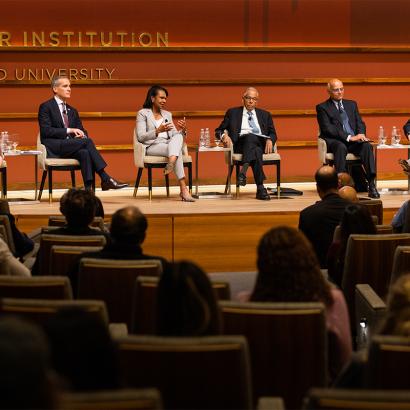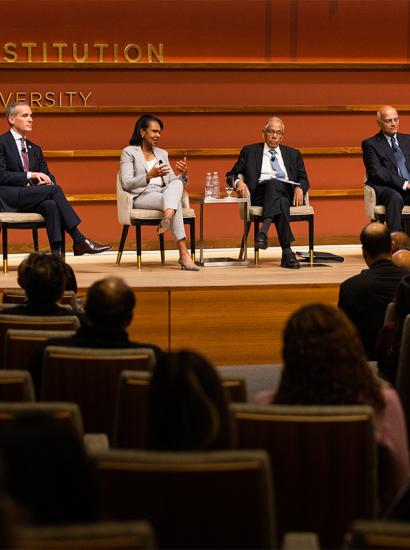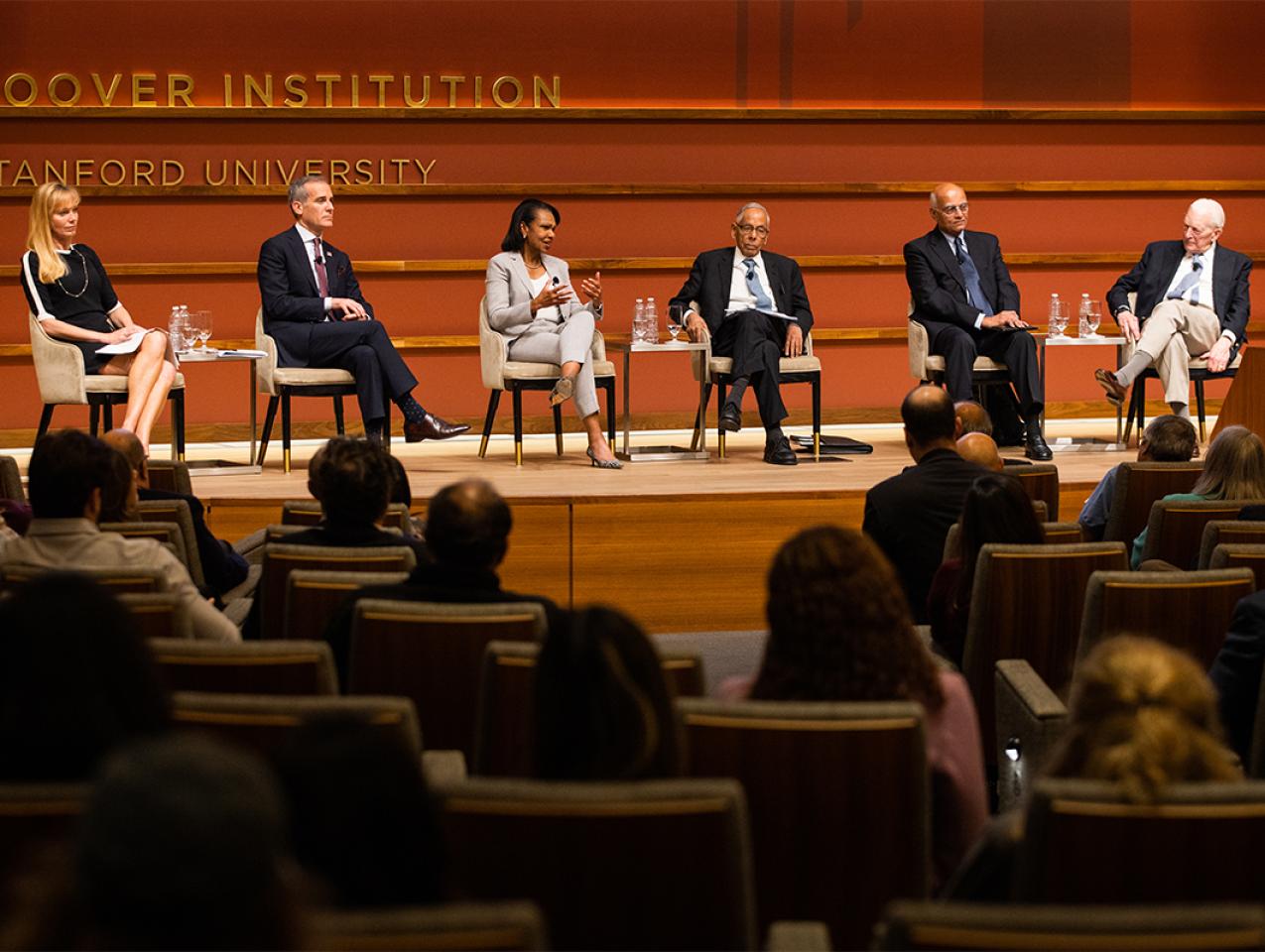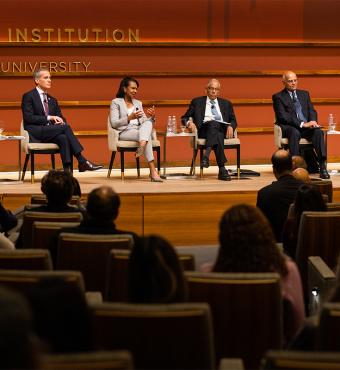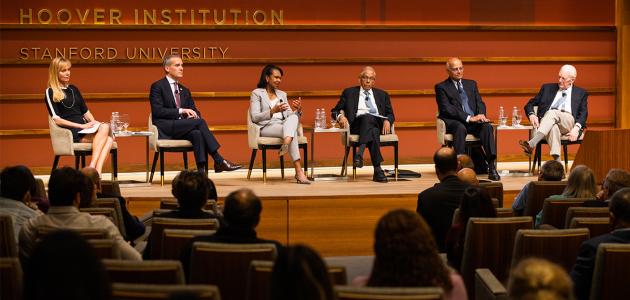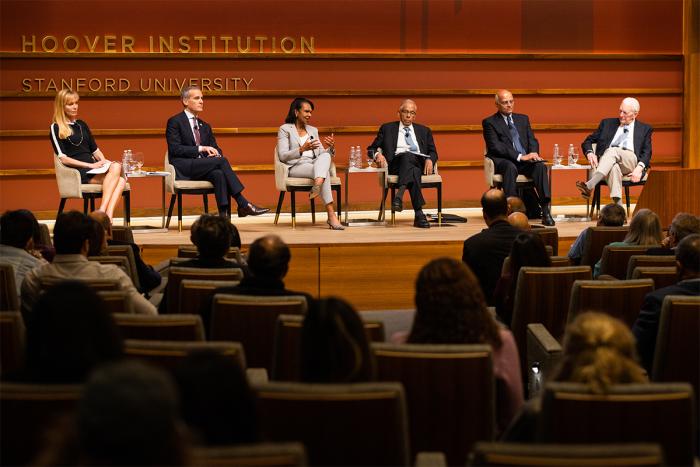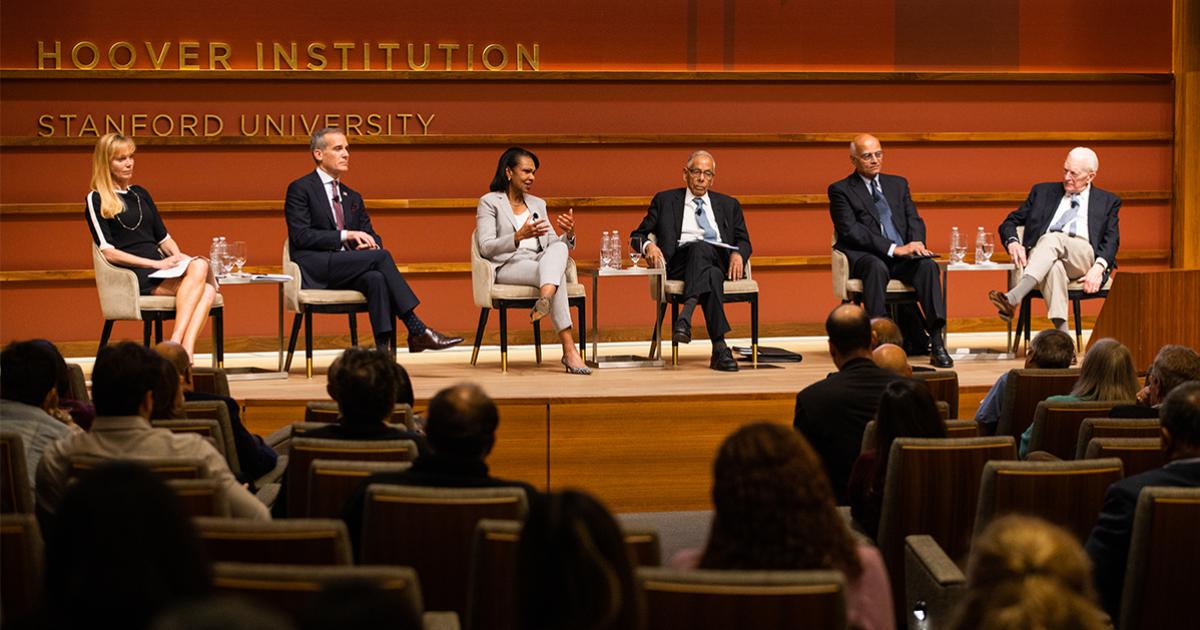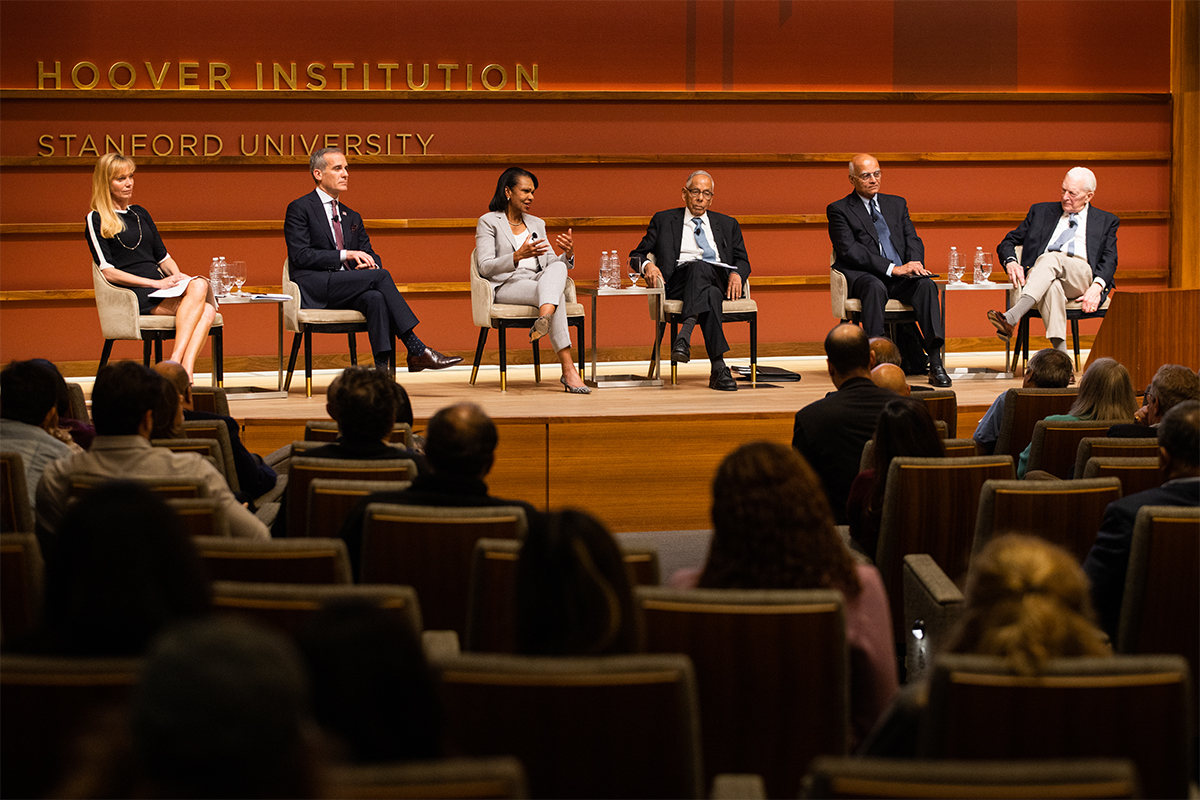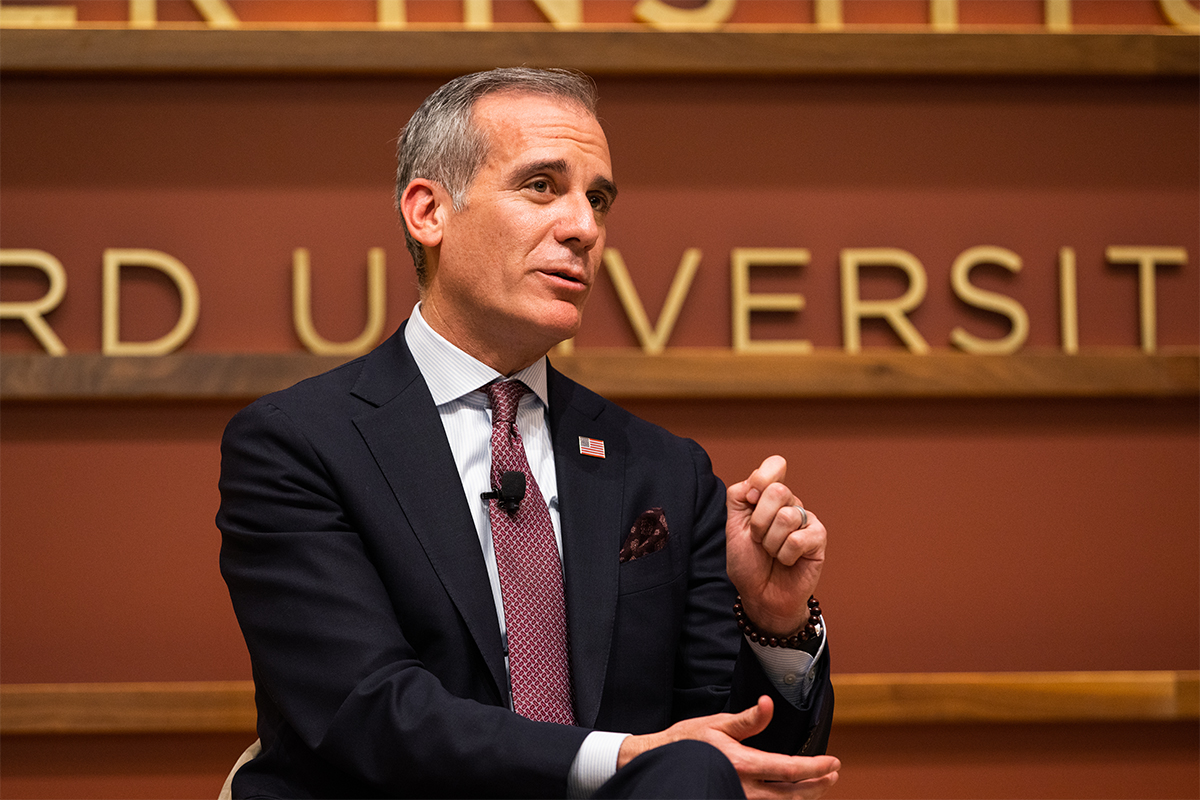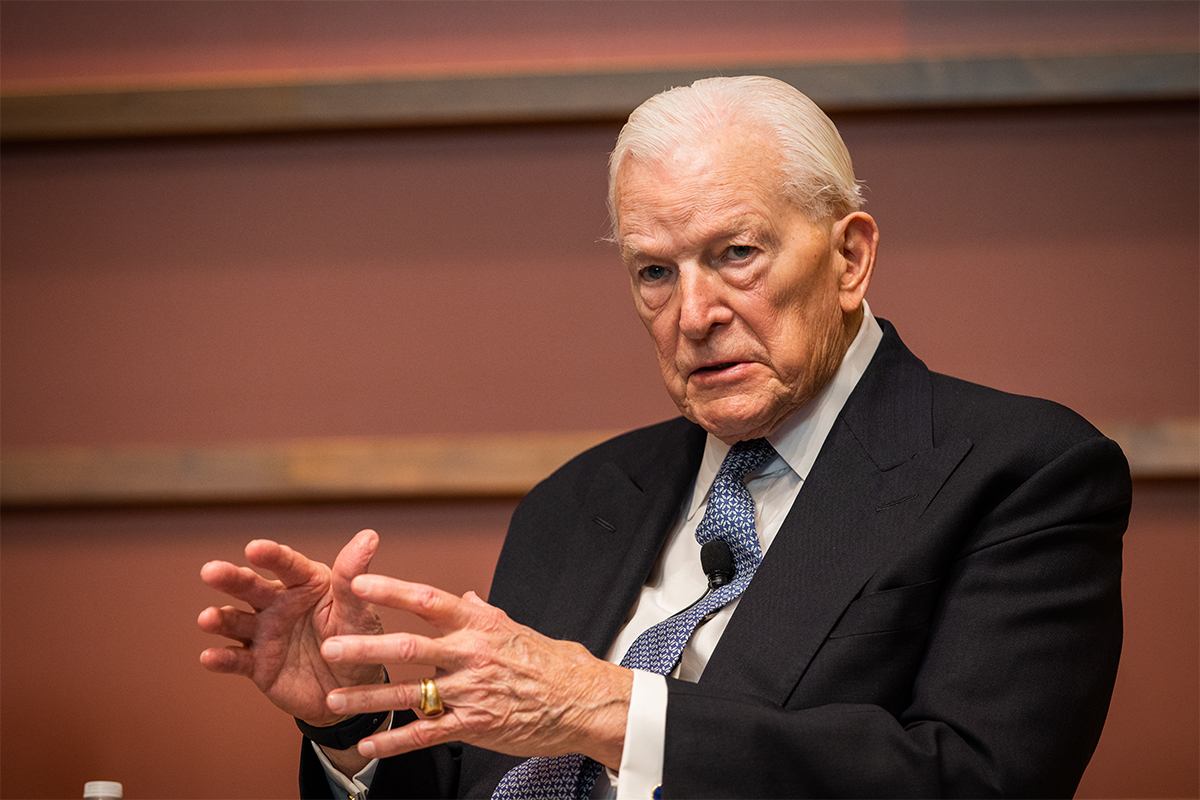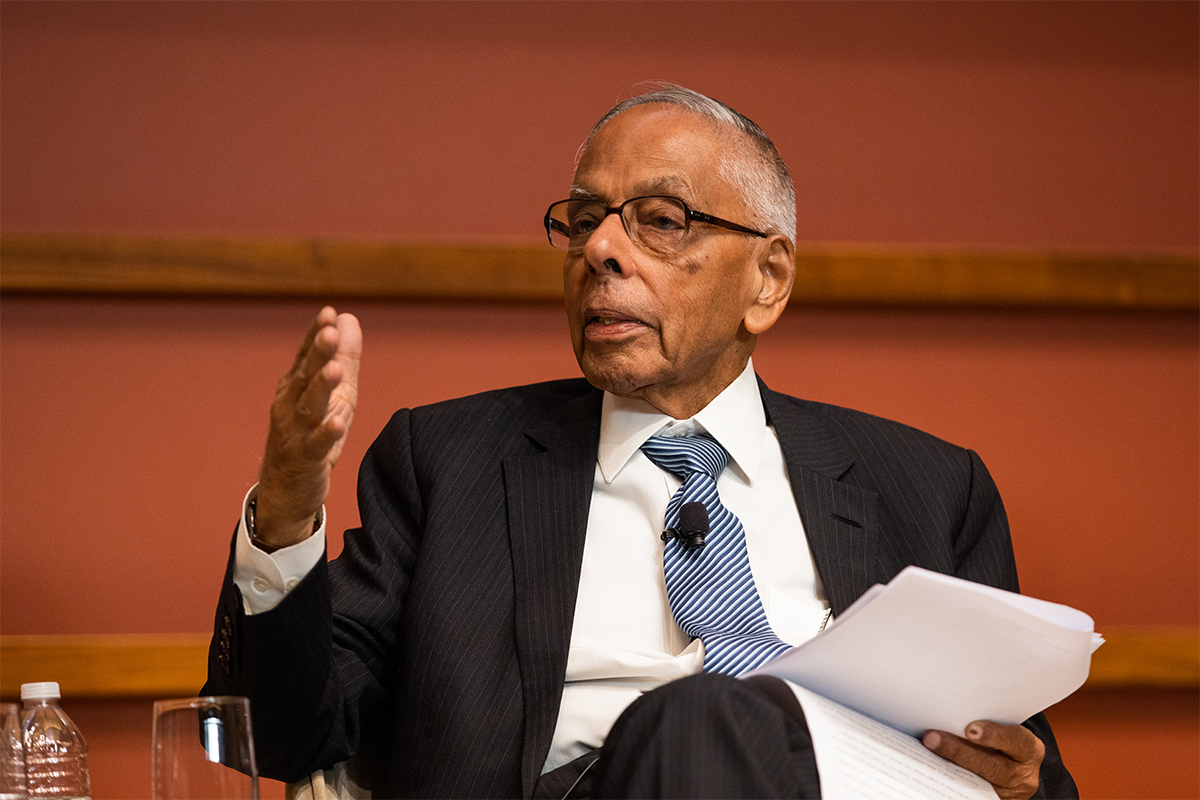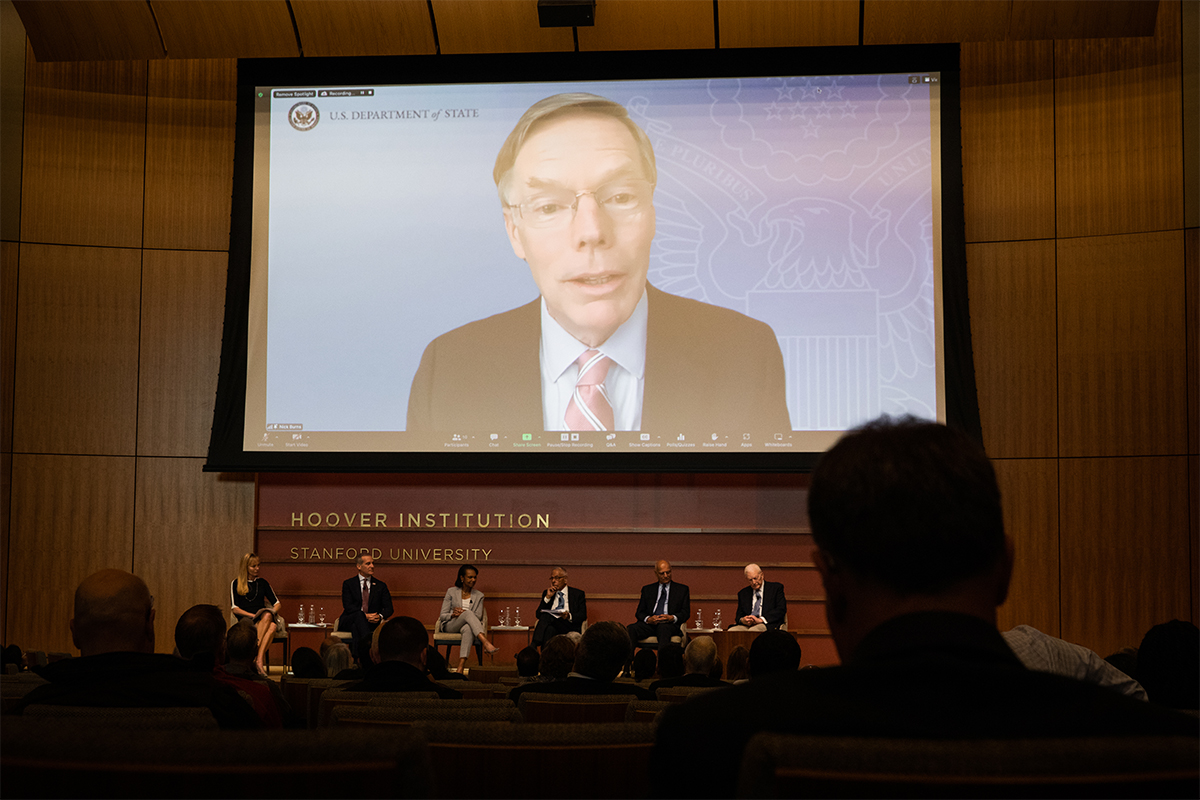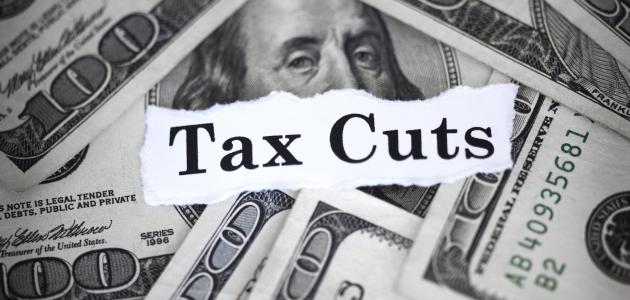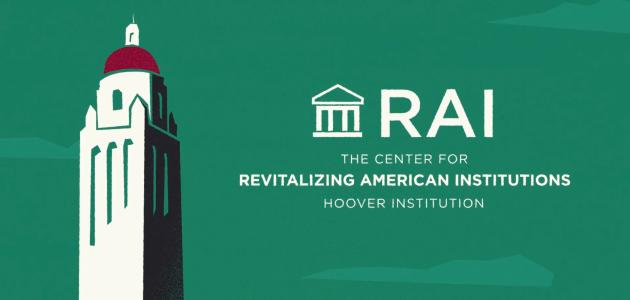Hoover Institution (Stanford, CA) — Recounting quiet but meaningful talks at global conferences and sometimes pointed discussions, officials from the United States and India recounted how they negotiated the 2008 US-India Civil Nuclear Agreement, at a public event on May 6.
It came as Hoover Institution distinguished visiting fellow David C. Mulford released Forging Trust with India: The Dramatic Story of Achieving the US-India Civil Nuclear Agreement, his own account of how the deal came to fruition, drawing on his experience as US ambassador to India from 2000 to 2008. The digital-exclusive publication is available to order through the Hoover Institution Press.
Barriers to Diplomatic Relations
Despite advancing economically through the 1990s and 2000s, India was still a pariah of sorts in the international community at the time of the deal’s negotiations, owing to its 1974 nuclear test and its refusal to sign the Nuclear Non-Proliferation Treaty (NPT) that same year. A second test of five nuclear devices in 1998 led to the US imposing sanctions on India, including an opposition to all lending by international financial institutions to India.
Shortly after President George W. Bush took office, then national security advisor Condoleezza Rice recounted him asking why the US wasn’t better friends with the world’s largest democracy.
Rice explained to President Bush that the barriers to better diplomatic relations came as a result of India’s nuclear tests and refusal to sign the most significant global treaty governing nuclear weapons’ development and use.
Unfazed by her response, Rice said Bush simply repeated himself.
“Why don’t we have a better relationship with India?”
M. K. Narayanan, national security advisor of India from 2005 to 2010, said the deal began with a simple request then Indian prime minister Manmohan Singh made of President Bush when they met in 2005.
“We Have a Problem with Energy”
“They met in New York on the sidelines of a UN General Assembly meeting and Singh had only one question,” Narayanan said of the prime minster and President Bush. “We have a problem with energy. If you can help us overcome the many embargoes put upon us, that would help.”
Narayanan said as the two sides continued to talk, what started out as a simple request for access to cleaner energy grew into a wider and deeper friendship between both nations.
Nicholas Burns, the current US ambassador to China, was appointed under secretary of state for political affairs in 2005 after Rice was sworn in as America’s sixty-sixth secretary of state that January. He worked closely with Secretary Rice and Mulford to coordinate the agreement.
Burns told attendees that bringing civil nuclear energy to India would accomplish an entirely separate goal of US foreign policy at the time.
“It would be a message to the [nuclear] proliferators of the world that if you play by the rules, there would be rewards in the international system,” Burns said.
Domestic Opposition
Rice, Burns, Narayanan, and Shivshankar Menon, foreign secretary of India from 2006 to 2009, each spoke of the opposition to the deal they faced in the two countries’ legislatures.
Narayanan said the Communist Party of India predictably was outraged at the prospect of a nuclear deal with the United States, believing that the Manmohan Singh administration would be ceding control of the nation’s foreign policy by going through with it. The Communists and other leftist parties walked out of Singh’s governing coalition in 2008 over the deal.
But he said the arrangement found an unlikely supporter in Sonia Gandhi, then president of the Indian National Congress (one of the largest political parties in India) and widow of the late prime minister Rajiv Gandhi.
“She accepted that the deal was good for India, and it was good for her. She had a sneaking suspicion that President Bush was the best thing that could have happened for India.”
Back in Washington, Rice and Burns said they briefed senator after senator on the benefits of the deal in 2006 and 2007.
“Between the two of us, we met with seventy-five senators, many of whom expressed apprehension,” Rice reflected in comments following the panel discussion. “In the end, it was a bipartisan win due to statesmanship, and a willingness of senators to look beyond partisan rivalries in order to protect and promote a common set of values with an important ally."
The eventual vote in the Senate in October 2008 was 86–13 in favor.
Ratification of a Civil Nuclear Deal
It took three years, from 2005 to 2008, for both sides to negotiate and fully ratify the deal.
Mulford recalled one encounter ahead of the Tokyo G7 Summit in 2008. The deal had stalled for some months leading up to the meeting, largely because of divisions within Singh’s governing coalition. Mulford asked for a one-on-one meeting with Singh to move a prospective deal along.
“I outlined to him how important it was for India to complete its side of the deal,” Mulford recalled. “He listened but didn’t say anything. He then said, ‘I hate to have to go to Tokyo and disappoint President Bush after all he’s done for us.’”
Mulford said that a few days after their meeting, Singh announced from his airplane that India was going ahead with the deal. From the Indian perspective, Menon described what Singh’s announcement meant for them.
“Singh made it clear to his colleagues he was willing to stake the fate of his government over this,” Menon said. “He was steadfast, and the reason he was steadfast was because of his confidence in President Bush.”
After getting clearance from the International Atomic Energy Agency, the Nuclear Suppliers Group of nations, and winning votes in both countries’ legislatures, Rice and Indian external affairs minister Pranab Mukherjee signed the deal to finalize it on October 10, 2008.
The Legacy of the Deal
Even years later, current US ambassador to India Eric Garcetti, who also participated in the Hoover event, said he still reaps the benefits of the two nations’ warming ties.
“I have one of the best jobs in the world right now,” he said. “The timing, the strategic importance—we don’t have to build the closeness we have. We can feel it.”
Alongside formal diplomatic ties, increased intelligence sharing, trade and joint military operations, Mulford said India and America enjoy strong personal bonds. This is especially the case for Indian youth, 200,000 of whom study in the US each year. And since 2005, more than sixty congressional delegations have visited India. The appeal of America in India is something US rivals struggle to cultivate.
“There might be fifty Indian students in Moscow right now, but I doubt they’re [as] happy,” Mulford said.








